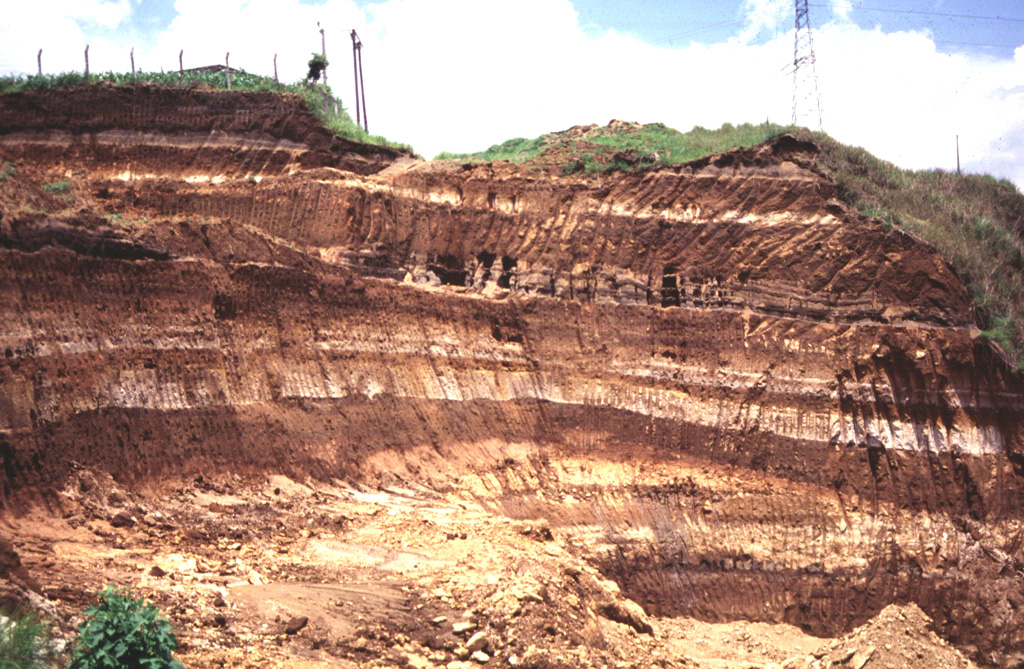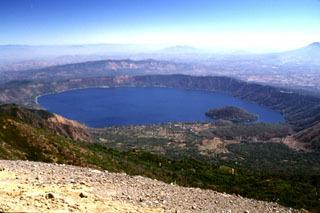Global Volcanism Program | Image GVP-07276

Light-colored rhyolite airfall pumice deposits from Coatepeque caldera are exposed in this quarry 20 km east of the caldera. These deposits were emplaced over much of SW El Salvador, and with the associated pyroclastic flow deposits have a volume of about 56 km3. The earlier biotite-bearing Arce deposits were produced during the largest eruption from Coatepeque about 72,000 years ago and are about 50 cmr thick at the Guatemalan border. The overlying Congo deposits originated during the second largest eruption of Coatepeque.
Photo by Carlos Pullinger, 1996 (Servicio Nacional de Estudios Territoriales, El Salvador).
![]() This image is made available under the Creative Commons BY-NC 4.0 license terms.
This image is made available under the Creative Commons BY-NC 4.0 license terms.
Keywords: pumice | tephra | stratigraphy | geology | outcrop

Coatepeque Caldera
